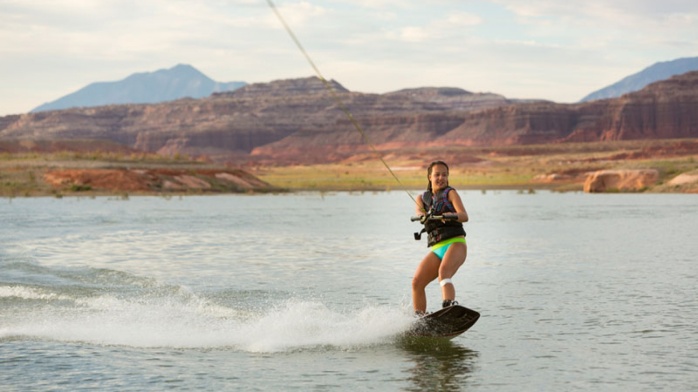
“Water: The fountain of youth, better skin, less cravings, more energy, better digestion, less headaches, a higher metabolism, better mood, and an ability to concentrate more. That is just from drinking it. Getting out and playing in a big whole body of it is a whole other ballgame”-Author Unknown
So, you are desirous of an activity that would both strengthen your core and upper muscles while getting wet in doing so. With that considered, you have decided to take up wake boarding.
After all, not only does it exercise your muscles, but it would make you look cool while doing it as well. Unfortunately, learning how to wake board is not quite as easy and straightforward as some novices would wish it to be. It takes a lot of balance, stamina and a degree of patience as well. Much like any other sport there is, learning it will be difficult and undoubtedly, it would take a lot of time and perseverance on your part. However, if you are persistent and sure in this endeavor, then soldier on. However, do take note that you might not get it right on your first try and it takes a lot of training before you can fully master the sport.
In any case, if you have been planning to learn how to wake board whether in republic wake park or elsewhere, here are some of the things you need to know:
1.) You will fall…a lot!
Maintaining balance on a wake board is already hard by itself—especially when it starts to move around the water. Every wake boarder is already well aware of how often you would fall down and even on your face sometimes. More often than not, you will not be able to pinpoint why exactly you fell. It may be that one moment you are doing fine and even waving to your friends, and in the next second, you are face-planting and drinking in lake water. The best and seasoned wake boarders are even known to experience this every once in a while. Unfortunately, you probably will not understand what went wrong. It might be your execution was wrong, or the way you placed your foot was off. However, you can rely on your instructor to assist you in refining your technique. Heed their advice the next time you take on the wake board.
2.) It will be tough on your arms
One of the reasons why wake boarding builds arm strength is because the sport itself is incredibly taxing on your arms alone. For the first few minutes, you might not be so bothered by it; you can still pull the rope. But after a few minutes or so, your arms will start to throb, and a dull ache would develop. Ten minutes in and your arms would feel like they are about to fall off. Brace through the pain though, as this is normal and eventually, you will get used to it. As a result, your arm strength would be a lot stronger as well.
3.) It will be easier when you are goofy footed
If you have already tried other sports such as skateboarding, snowboarding, surfing then you would have previously assessed whether you are regular or goofy footed. However, if you are unsure, then one way to determine whether you are is to think about which foot you would naturally kick a ball with. This foot will be your resultant back foot. Once you are in the water, you would be able to tell which foot will be your dominant foot for wake boarding. Whichever feels more natural to you will inevitably be the foot that will point forward.
4.) Water hurts
Most beginners have developed this false sense of security thinking that wake boarding would in no way be harmful. However, much like the case of extreme sports, wake boarding can be potentially painful—especially when you slam yourself in water. On the outset, water might look like a soft landing but once you start skipping along the surface, take a tumble or even catch an edge, you will realize that it is not as smooth as you had initially thought it would be—especially when you are running on high or full speed.
5.) Use a shorter rope when you first start
Shorter ropes make it easier for wake board beginners to stand up and balance themselves on the board. Shorter ropes would mean that the beginner would be in the narrower portion of the wake. Moreover, it is much easier to take instructions yelled by the instructor seeing as you would be in proximity to the boat. As you progress, you can increase the length of the rope used. Longer ropes are for seasoned and advanced riders who wish to gather more speed and air in executing some aerial techniques and tricks. However, as you are still starting out, start with a rope length that is somewhere between 30 and 50 feet.

